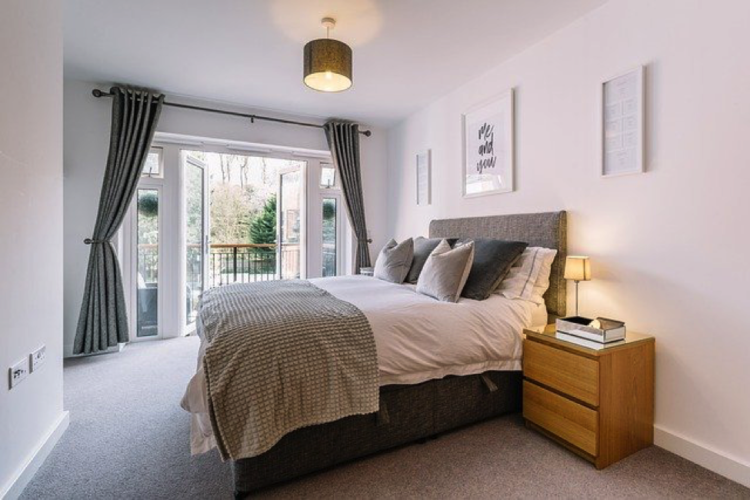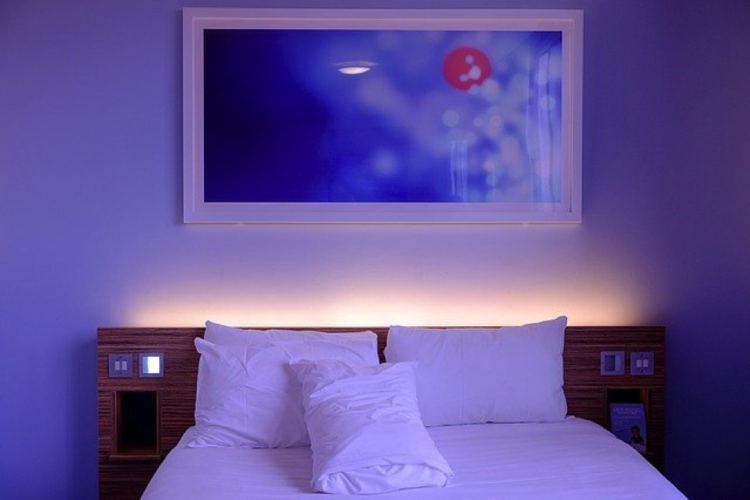It’s no secret that a lack of sleep can have a detrimental effect on our mental health as well as our physical well-being. Not only can it affect you on a personal level but also those around you, ruining relationships with your partner, friends and family.
But what does it truly mean to get a good night sleep and what role does our bedroom environment play towards getting optimum rest? These are just some of the questions we shall looking into today!

In this fast-paced world that we live in with everyone seemingly glued to their smartphone, images of war, famine and global pandemics constantly fill our news feeds. While it is noble and human to worry about these topics, and we can all do our bit to make the world a better place, oftentimes these things are very much out of our control. This is not to mention the day-to-day routines and chores that we need to deal with in our personal lives in terms of work, finances, relationships etc. All this can lead to a very overwhelming and stressful scenario which inhibits our ability to get a good night sleep.
While we can’t necessarily control these external factors, what we should be able to control is the environment in our own home, more specifically in our bedroom. Here are some useful tips to help fill our sleeping station with a sense of tranquillity and calm, soothing you to sleep.
Mattress Type
An essential yet often overlooked part of getting some good sleep. The sleep gurus at https://sleepsotight.com/ say that mattress technology has reached new heights with the duo adjustable smart mattresses, allowing for couples to decide how firm or plush they want their side of the bed. This means that one partner doesn’t have to compromise for the other.
Everyone has their own preferences to what makes a comfortable mattress, some like it to mould perfectly to the shape of their body (memory foam) whilst others prefer something hardier (spring mattress). For those couples with severe sleeping issues, this could be the difference between a healthy and or dysfunctional relationship, as using an old or wrong mattress over an extended period of time can lead to a bad neck and back pains and in turn sleep deprivation.
The right bed should support the natural alignment of your spine as well as other parts of the body such as hips and shoulders. Lots of people like to buy a Beautyrest mattress that has motion separation, reducing the disturbance of movement from your partner. Additionally, the quality of your mattress can also affect temperature, with memory foam absorbing more heat while innerspring mattresses tend to have better airflow.
Technology
At times a blessing and a curse, technology has come to play an essential role in our day-to-day lives. However, there have been numerous studies in recent years which have shown a growing correlation between lack of sleep and the amount of time we spend on our smart devices, particularly at night time.
One study conducted and published in 2016 by the University of California in San Francisco found that “longer average screen-times during bedtime and the sleeping period were associated with poor sleep quality, decreased sleep efficiency, and longer sleep onset latency”.
How often have we been guilty of trying to get to some sleep whilst simultaneously scrolling through our smartphone and looking at the latest how-to video on youtube? We’ve all been there but why is this bad exactly? Well, our smartphones emit a lot of blue light. This is essentially light with small blue wavelengths which are said to be good for boosting attention and reaction times, not the best thing when we’re trying to catch some hay.
Furthermore, whilst iPhones and androids come equipped with Night Mode, there is said to be very little evidence over how effective this is in helping with sleep or reducing strain on the eyes. That’s according to Daniel Hardiman-McCartney, a clinical adviser at FCOptom.
Furthermore, a more recent study published by Current Biology in 2019 found that the yellow light, also emitted by our smartphones, may actually be worse as it more ‘closely imitates daylight’. So we’re essentially looking at a beam of light which tricks our brain into thinking it’s not time to sleep yet no matter how tired we really are.
So What’s the Solution?
Of course, anyone can tell someone to simply stop using their phone at night but that in itself is far easier said than done. Better advice would be to limit the amount of technology we use in our bedroom as well as smartphone usage before bed.
Sleep technologist, Darius Uknuis says that our bedroom and specifically our bed should only be associated with sleep. “If you have to do things like reading or watching TV and you can’t sleep, make sure you go to another room” to do that and then when you feel sleepy and then return to your bed.
This doesn’t bode well for people who have televisions in their bedroom but we can try and limit its usage during evening times. Of course, this is not an anti-technology piece as just as … it can also help us to get some sleep if used effectively.
Nowadays there are plenty of apps on our smartphones designed to help us get some well-deserved shut-eye such as Calm and or Headspace. There are also playlists available on Spotify and other music streaming services that are aimed to help lull us to sleep such as Rain-Sounds.
Color, Style and Ambience
Think of something that relaxes you, something that fills you with joy and calmness, it could be nature, music, art or even your favourite sports team. Our bedroom space should encourage these feelings so if you are particularly fond of nature, add some green to your space by buying some plants or even pictures and or paintings of nature.
American writer and TV personality, Martha Stewart states that filling your bedroom with foliage is a great way to escape the stress of the day as well as helping us fall to sleep. She goes on to say that some plants are better at this than others such as Jasmine and Aloe Vera.
In regards to a color scheme for your bedroom, muted colors such as light shades of blue and green as usually preferred over harsher colors such as red, pink or anything that provides a glossy effect.

As the saying goes, a clutter-free room is equal to a clutter-free mind. This minimalist approach encourages you to seek out what is extra or not needed in your room and get rid of it or put it away. This is not to say you need to go to an extreme level, but de-cluttering can be immensely satisfying for the mind.
Anything that can help settle the mind and free it from stress can only be a good thing in terms of trying to get some good sleep. Ok, so now you’ve got the tools to succeed. Good luck and get some well-deserved sleep.







